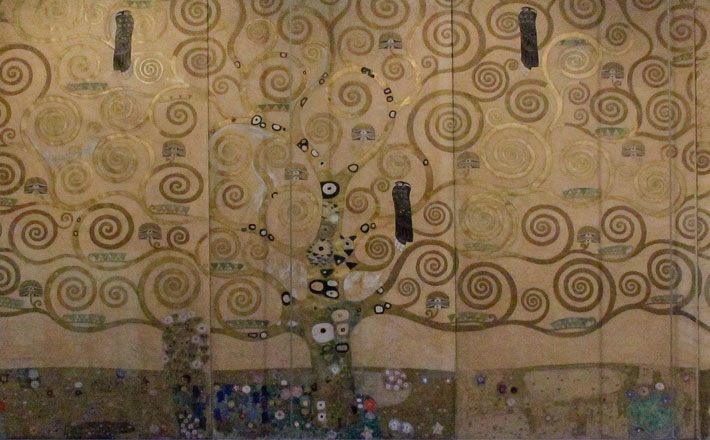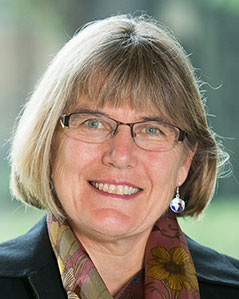Commentary on Revelation 21:10, 22—22:5
“Then the angel showed me the river of life-giving water, clear as crystal.” Bishop William Skylstad of the Roman Catholic Church’s Spokane Diocese cites this verse from Revelation in recalling his own childhood experience of salmon fishing and growing up on an apple orchard along the Methow River, in Washington State.1
We all live in a watershed, a river basin. The river of the water of life flowing from the throne of God at the close of the New Jerusalem vision in Revelation 22 helps us draw connections between the particular rivers of our lives and the watershed of God’s river of life flowing through the world.
The river of life brings to a conclusion the architectural tour of New Jerusalem, in which an angelic guide “shows” John the features of God’s radiant city. The tour is modeled on the angel’s tour of the new temple in Ezekiel 40-48. Revelation makes important changes along the way that open up Ezekiel’s priestly vision to everyone. One striking modification is that New Jerusalem has “no temple” (21:22). God’s presence now extends to the entire city’s landscape, with all of God’s people serving and reigning with Christ as priests (Revelation1:6; 5:10; 20:6; 22:3, 5).
New Jerusalem is a welcoming city, not a gated community. Whereas Ezekiel’s temple gate was shut so that “no one shall enter by it” (Ezekiel 44:1-2), the gates into New Jerusalem are perpetually open — they are “never shut by day and there will be no night there” (Revelation 21:26). Even foreigners are invited to enter into this radiant city, whose lamp is the Lamb, Jesus. Nations will walk by its light, streaming in through its open gates (21:24, 26). In our time when nations and neighborhoods seek to secure themselves against outsiders, the church can claim Revelation’s vision of openness and multicultural welcome for all our cities.
The final verse of the chapter (21:27) is another prophetic wake-up call, exhorting faithfulness so that our names are written in Jesus’ book of life and we may enter as citizens into God’s New Jerusalem. Exhortation, not prediction, is the function of such threatening verses. Revelation seeks to make God’s vision of beauty so persuasive and real that the audience will “come out” of the evil empire (18:4) in order to enter into the promised land of blessing and healing.
The recurring image of the “throne” in this passage is a central image for Revelation. John’s apocalyptic journey began with a tour of the heavenly throne-room back in Revelation 4-5. But where is the “throne of God and the Lamb” located in Revelation 22? The text suggests that God’s throne will move down from heaven, where it was in chapter 4, and will be located in the middle of the city that descends from heaven to earth (see Rev 21:2). Thus, the New Jerusalem can be read as a wonderfully earth-centered vision for our future, a vision of hope for the world. Contrary to the escapism or “heavenism” that dominates some interpretations today, Revelation suggests that our future dwelling with God will be on a radiant earth.
Green space and God’s river of life fill out the final description of the city. Revelation 22:1-5 recreates the garden of Eden in the center of a thriving urban landscape, drawing on Ezekiel’s vision of a wondrous tree-lined river flowing out from the temple:
Water was flowing from below the threshold of the temple toward the east. . . .On the banks, on both sides of the river, there will grow all kinds of trees for food. Their leaves will not wither nor their fruit fail, but they will bear fresh fruit every month, because the water for them flows from the sanctuary. Their fruit will be for food, and their leaves for healing. (Ezekiel 47:1, 12)
In Revelation the river of life flows not from the temple but from the throne of God and the Lamb, through the center of the processional street of the city. Ezekiel’s fruit-trees on both banks become the wondrous “tree of life” in Revelation (22:2), invoking paradise traditions. The fruit of the ever-bearing tree of life satisfies the hunger of all in need, overcoming the prohibition of Genesis 3:22.
Most importantly, the tree’s leaves provide healing. In contrast to the toxic pharmakeia (“sorcery,” Rev 18:23) of Babylon, God’s tree of life gives medicine — therapeia — for the world. The prophet Ezekiel described trees with leaves for healing; Revelation deliberately universalizes Ezekiel’s vision by adding the “healing of the nations” to the tree’s healing leaves (Revelation 22:2; compare Ezekiel 47:12). Revelation’s medicinal leaves offer a vision of a political economy that heals us all and heals our world. God’s healing comes from creation, from a tree.
The tour of the city concludes with reference to God’s servants who offer service and worship (latreusousin) before the throne (Revelation 22:3). God’s servants shall reign forever and ever. At a time when Rome claimed to reign forever, Revelation boldly proclaimed that it is God who reigns — not the Empire — and that God’s servants will also reign with God. Note, however, that there is no object of the verb “reign.” God’s servants do not reign over anyone else. The text invites us to explore ways to understand our reign not as domination over, but as sharing in, God’s healing of the world.
Revelation’s vision of God’s life-giving watershed in the center of our cities renews hope for our future. We need New Jerusalem. We need the trees of life, the healing of the nations. These glimpses of a renewed earth can inspire and motivate us. Through each of our cities, by whatever name — the Mississippi, the Monongahela, the Methow — there is a river flowing from the heart of God and the Lamb. It is the life-giving river of the water of life, into which each we are baptized and by which we are renewed.
1William Skylstad, “The Waters of Life” in Brian Doyle, ed., God Is Love: Essays from Portland Magazine (Minneapolis: Augsburg, 2003) 82.


May 5, 2013